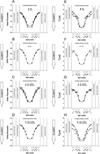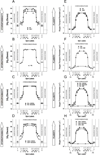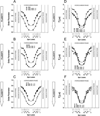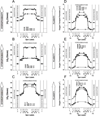Functions of cholesterol and the cholesterol bilayer domain specific to the fiber-cell plasma membrane of the eye lens
- PMID: 22207480
- PMCID: PMC3288876
- DOI: 10.1007/s00232-011-9412-4
Functions of cholesterol and the cholesterol bilayer domain specific to the fiber-cell plasma membrane of the eye lens
Abstract
The most unique feature of the eye lens fiber-cell plasma membrane is its extremely high cholesterol content. Cholesterol saturates the bulk phospholipid bilayer and induces formation of immiscible cholesterol bilayer domains (CBDs) within the membrane. Our results (based on EPR spin-labeling experiments with lens-lipid membranes), along with a literature search, have allowed us to identify the significant functions of cholesterol specific to the fiber-cell plasma membrane, which are manifest through cholesterol-membrane interactions. The crucial role is played by the CBD. The presence of the CBD ensures that the surrounding phospholipid bilayer is saturated with cholesterol. The saturating cholesterol content in fiber-cell membranes keeps the bulk physical properties of lens-lipid membranes consistent and independent of changes in phospholipid composition. Thus, the CBD helps to maintain lens-membrane homeostasis when the membrane phospholipid composition changes significantly. The CBD raises the barrier for oxygen transport across the fiber-cell membrane, which should help to maintain a low oxygen concentration in the lens interior. It is hypothesized that the appearance of the CBD in the fiber-cell membrane is controlled by the phospholipid composition of the membrane. Saturation with cholesterol smoothes the phospholipid-bilayer surface, which should decrease light scattering and help to maintain lens transparency. Other functions of cholesterol include formation of hydrophobic and rigidity barriers across the bulk phospholipid-cholesterol domain and formation of hydrophobic channels in the central region of the membrane for transport of small, nonpolar molecules parallel to the membrane surface. In this review, we provide data supporting these hypotheses.
Figures










Similar articles
-
Properties of fiber cell plasma membranes isolated from the cortex and nucleus of the porcine eye lens.Exp Eye Res. 2012 Apr;97(1):117-29. doi: 10.1016/j.exer.2012.01.012. Epub 2012 Feb 2. Exp Eye Res. 2012. PMID: 22326289 Free PMC article.
-
Is the cholesterol bilayer domain a barrier to oxygen transport into the eye lens?Biochim Biophys Acta Biomembr. 2018 Feb;1860(2):434-441. doi: 10.1016/j.bbamem.2017.10.020. Epub 2017 Oct 25. Biochim Biophys Acta Biomembr. 2018. PMID: 29079282 Free PMC article.
-
Cholesterol and cholesterol bilayer domains inhibit binding of alpha-crystallin to the membranes made of the major phospholipids of eye lens fiber cell plasma membranes.Exp Eye Res. 2021 May;206:108544. doi: 10.1016/j.exer.2021.108544. Epub 2021 Mar 17. Exp Eye Res. 2021. PMID: 33744256 Free PMC article.
-
Cholesterol Bilayer Domains in the Eye Lens Health: A Review.Cell Biochem Biophys. 2017 Dec;75(3-4):387-398. doi: 10.1007/s12013-017-0812-7. Epub 2017 Jun 29. Cell Biochem Biophys. 2017. PMID: 28660427 Free PMC article. Review.
-
Organization of lipids in fiber-cell plasma membranes of the eye lens.Exp Eye Res. 2017 Mar;156:79-86. doi: 10.1016/j.exer.2016.03.004. Epub 2016 Mar 14. Exp Eye Res. 2017. PMID: 26988627 Free PMC article. Review.
Cited by
-
High Cholesterol/Low Cholesterol: Effects in Biological Membranes: A Review.Cell Biochem Biophys. 2017 Dec;75(3-4):369-385. doi: 10.1007/s12013-017-0792-7. Epub 2017 Apr 17. Cell Biochem Biophys. 2017. PMID: 28417231 Free PMC article. Review.
-
Oxygen Transport Parameter in Plasma Membrane of Eye Lens Fiber Cells by Saturation Recovery EPR.Appl Magn Reson. 2021 Jan;52(1):61-80. doi: 10.1007/s00723-020-01237-7. Epub 2020 Aug 14. Appl Magn Reson. 2021. PMID: 33776217 Free PMC article.
-
Measuring the viscosity of whole bovine lens using a fiber optic oxygen sensing system.Mol Vis. 2014 Jan 29;20:125-31. eCollection 2014. Mol Vis. 2014. PMID: 24505211 Free PMC article.
-
Lipid-protein interactions in plasma membranes of fiber cells isolated from the human eye lens.Exp Eye Res. 2014 Mar;120:138-51. doi: 10.1016/j.exer.2014.01.018. Epub 2014 Jan 31. Exp Eye Res. 2014. PMID: 24486794 Free PMC article.
-
Properties of membranes derived from the total lipids extracted from the human lens cortex and nucleus.Biochim Biophys Acta. 2013 Jun;1828(6):1432-40. doi: 10.1016/j.bbamem.2013.02.006. Epub 2013 Feb 21. Biochim Biophys Acta. 2013. PMID: 23438364 Free PMC article.
References
-
- Ashikawa I, Yin J-J, Subczynski WK, Kouyama T, Hyde JS, Kusumi A. Molecular organization and dynamics in bacteriorhodopsin-rich reconstituted membranes: discrimination of lipid environments by the oxygen transport parameter using a pulse ESR spin-labeling technique. Biochemistry. 1994;33:4947–4952. - PubMed
-
- Bach D, Wachtel E. Phospholipid/cholesterol model membranes: formation of cholesterol crystallites. Biochim Biophys Acta. 2003;1610:187–197. - PubMed
-
- Barbazetto IA, Liang J, Chang S, Zheng L, Spector A, Dillon JP. Oxygen tension in the rabbit lens and vitreous before and after vitrectomy. Exp Eye Res. 2004;78:917–924. - PubMed
-
- Bassnett S, McNulty R. The effect of elevated intraocular oxygen on organelle degradation in the embryonic chicken lens. J Exp Biol. 2003;206:4353–4361. - PubMed
Publication types
MeSH terms
Substances
Grants and funding
LinkOut - more resources
Full Text Sources
Medical

